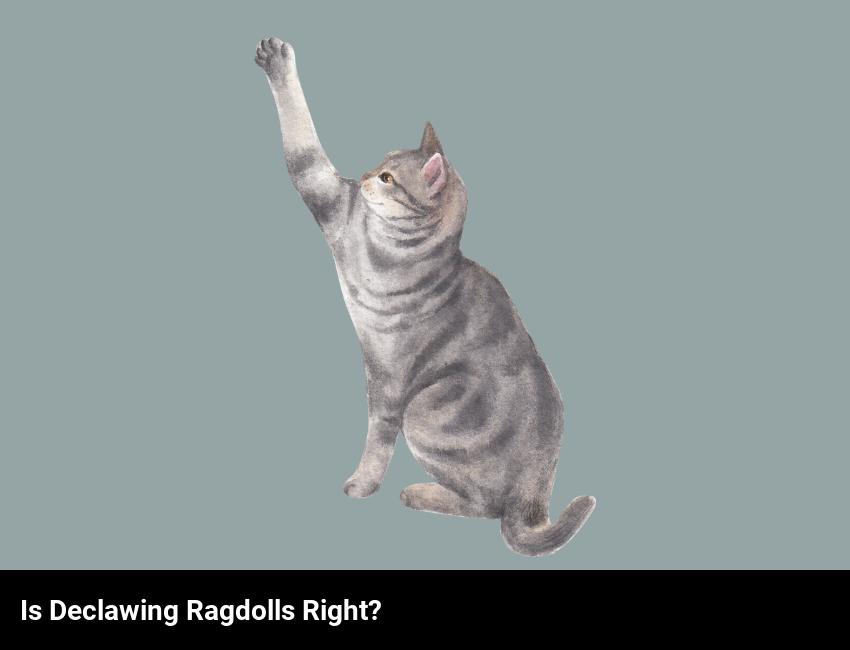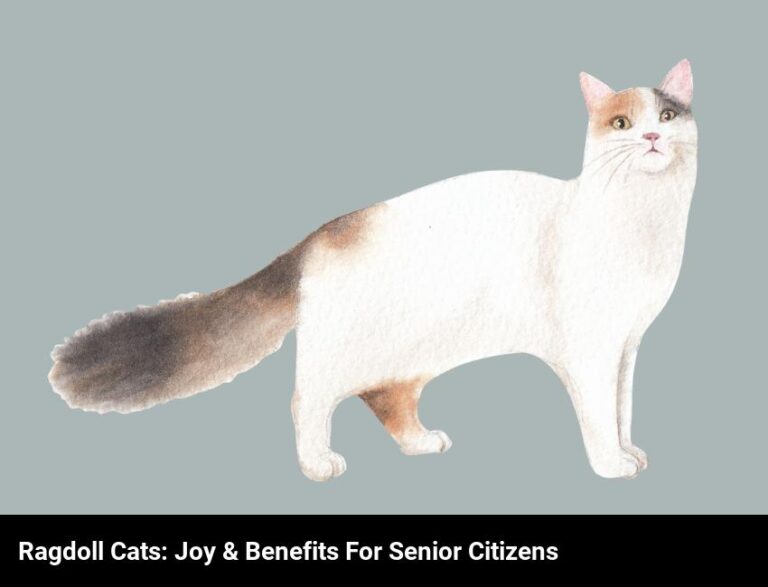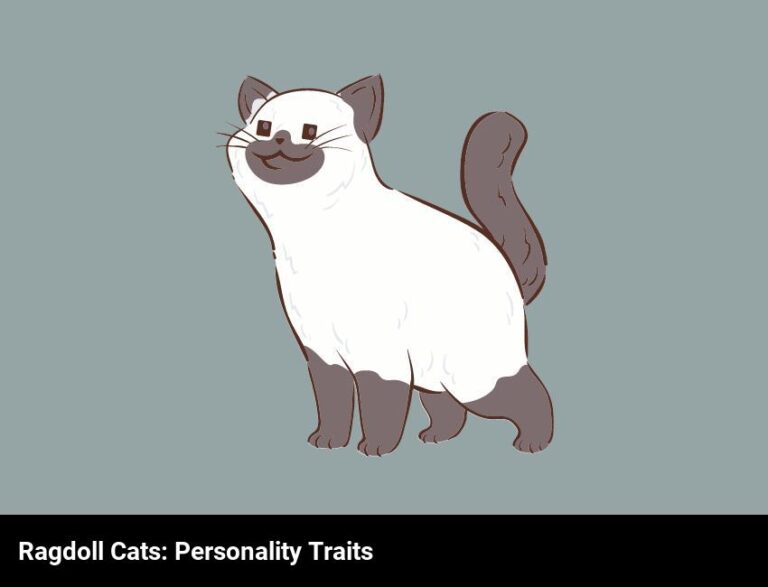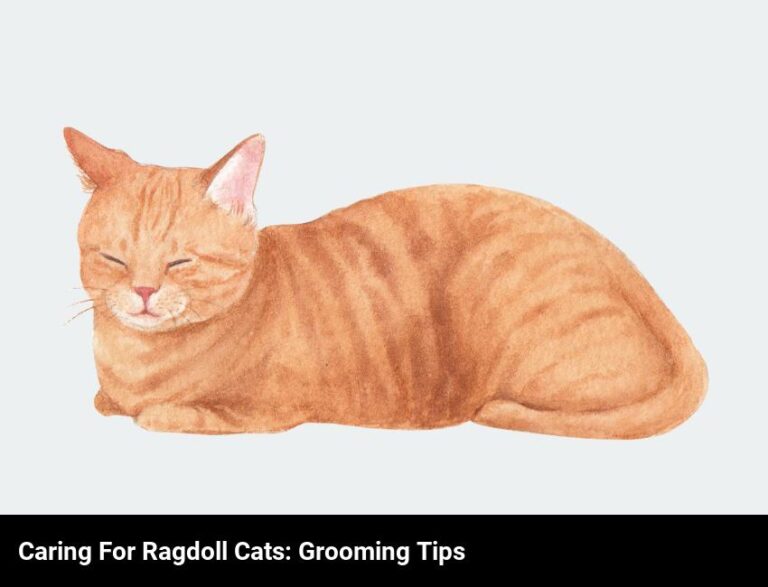Is Declawing Ragdolls Ethical?
No, declawing Ragdolls is not considered ethical. It is an inhumane and unnecessary procedure that causes cats pain and long-term health complications.
As a proud Ragdoll owner, I’ve often heard the debate about declawing cats and whether it is ethical or not. I’ve done some research and I’m still undecided. I want to know more about this procedure and the implications it has for my beloved pet.
In this blog, I will explore the world of declawing Ragdolls, from the physical and psychological harm it can cause to the legal status and ethical perspective on the procedure. I will also look into the opinions of Ragdoll owners, as well as the opinion of veterinarians, to gain a more holistic understanding of the topic.
Ultimately, my goal is to reach a conclusion on whether declawing Ragdolls is ethical or not. I invite you to join me on this journey as we explore the finer details of this controversial subject.
What is declawing?
Declawing is a surgical procedure that removes the claw (and sometimes the last bone) of a cat’s paw. It is also sometimes referred to as onychectomy. It is a very extreme procedure and is considered to be an inhumane practice by some animal rights organizations.
Declawing can be done with either a scalpel or laser. With a scalpel, the veterinarian will cut through the paw, remove the claw, and then stitch up the paw. With a laser, the veterinarian will use a laser beam to vaporize the tissue and seal the wound. Both methods can cause pain and discomfort for the cat, so it is important to weigh the pros and cons before deciding to declaw a Ragdoll.
It is important to note that declawing does not just remove the claws. It also involves removing the last bone of the paw, which can cause the cat to suffer from chronic pain and stiffness in its paws. In addition, declawing can affect the cat’s balance and make it more likely to injure itself. Declawing can also lead to behavioral changes, such as excessive biting and scratching of furniture.
Ultimately, the decision to declaw a Ragdoll is a personal one. It is important to consider the risks and make sure that declawing is the only option. If there are alternatives to declawing, such as providing scratching posts and trimming the cat’s claws regularly, it may be a better option.
What are the arguments for and against declawing ragdolls?
When it comes to declawing Ragdolls, there are two sides to the debate. On the one hand, many owners argue that it is a necessary procedure for the safety of their home, family, and other pets, while on the other side, opponents claim that it is an inhumane and painful procedure that should be avoided at all costs.
The arguments in favor of declawing Ragdolls are as follows: first, it provides a safer environment, as it prevents cats from scratching furniture, carpets, and people, and can help prevent cats from becoming aggressive. Second, it is a simple and relatively painless procedure, and because Ragdolls are so gentle, they recover quickly and can return to their normal activities almost immediately following the procedure. Third, declawing can help reduce the risk of infections, as it eliminates the need for cats to scratch themselves and risk infection from dirty nails.
At the same time, there are several arguments against declawing Ragdolls. First, some opponents argue that it is an inhumane and cruel procedure, as cats are not able to determine where and when it is safe to use their claws, and the procedure can cause long-term behavioral and physical problems for them. Second, it can be expensive, as it requires anesthesia and post-operative care, and can be difficult to find a veterinarian who will perform the procedure. Third, it can lead to an increased risk of litter box problems, as cats may be more hesitant to use the litter box if they are unable to use their claws to cover their waste.
Ultimately, the decision of whether or not to declaw a Ragdoll should come down to the individual owner. If they believe that the benefits outweigh the risks, then it may be a logical choice. However, if they believe that declawing is an inhumane and unnecessary procedure, then it is best to opt for alternative means of preventing cats from scratching inappropriate objects.
What are the physical and psychological harm associated with declawing?
Declawing Ragdolls can lead to serious physical and psychological harm. The physical harm associated with declawing includes infection, pain, and lameness. When a cat is declawed, their toes are cut off at the last joint and their paws are amputated. This can lead to pain, infection, and lameness. The declawing procedure can also cause long-term nerve damage, making it difficult for cats to walk and move normally.
The psychological harm associated with declawing includes anxiety, fear, and depression. When a cat is declawed, it can feel like its entire sense of security has been taken away. This can lead to anxiety, fear, depression, and stress. Cats are also more likely to bite and scratch when they are declawed, as they may no longer feel secure and may use their teeth and claws as a form of protection.
Declawing is an extremely painful and traumatic experience for cats and can lead to long-term physical and psychological harm. Therefore, it is important to consider all of the risks before deciding to declaw your Ragdoll cat. If you do choose to declaw your cat, ensure that you use a qualified and experienced vet and that you follow all post-operative instructions carefully.
What are the alternatives to declawing a ragdoll?
When it comes to declawing your Ragdoll, you have other options. Instead of resorting to this painful procedure, you can try out some of these alternatives.
The first one is claw trimming or nail clipping. It’s a safer, less painful alternative to declawing and doesn’t require much upkeep. All you need to do is trim your cat’s claws once every two weeks or so. It’s important to trim all the way down to the quick and use the appropriate clippers.
Another option is to provide a scratching post. Scratching is a natural behavior for cats, so providing a scratching post will help keep your Ragdoll from damaging your furniture. Make sure you get a sturdy post that’s tall enough for your cat to stretch and scratch.
Finally, you can also use deterrents to keep your cat away from furniture or other items they shouldn’t be scratching. There are various sprays and other products that you can use to make certain areas off-limits to your cat.
Declawing a Ragdoll is a painful and controversial procedure, so it’s best to explore other options first. With a little bit of effort, you can keep your cat’s claws under control without resorting to declawing.
What is the legal status of declawing ragdolls?
The legal status of declawing ragdolls varies from country to country. In the United States and Canada, declawing of cats is generally considered a cosmetic procedure and is legal in most states. However, there are some states and provinces in which it is illegal.
In the UK, declawing cats is illegal. In addition, many countries, including France, Germany, and Italy, have banned the practice of declawing cats.
In Australia, declawing cats is not illegal, but it is discouraged by veterinarians and the Royal College of Veterinary Surgeons. The college has issued a position statement saying that the procedure is not a necessary part of responsible cat ownership, and that it should only be used as a last resort.
When it comes to declawing ragdolls specifically, the decision whether or not to do so should be made on a case-by-case basis. It is important to be aware of the legal requirements in your area, as well as the potential risks and benefits of the procedure. Ultimately, the decision should be made by the owner in consultation with their veterinarian.
What is the ethical perspective on declawing ragdolls?
When it comes to declawing your ragdoll cat, it’s important to consider the ethical perspective on the topic. In short, declawing is considered to be an unethical practice that should be avoided at all costs.
Firstly, declawing is a painful procedure for cats which can cause them to experience physical and psychological trauma. This is because the procedure involves amputating the front claws, which can be incredibly painful for cats. Additionally, it can also lead to long-term health issues, such as arthritis and limb pain, as the cat’s leg is no longer able to support its body weight properly.
Secondly, declawing isn’t only cruel to the cats – it can also be damaging to cats’ relationships with their owners. Cats that have been declawed are more likely to display aggression and anxiety towards their owners due to the pain associated with the procedure. This can make it difficult for cats and their owners to bond, which can have a negative impact on the quality of the relationship.
Finally, declawing is unnecessary in most cases. There are many humane alternatives that can be used to control a cat’s behavior, such as providing scratching posts and using nail caps. These alternatives are far more humane than declawing and can help to keep your cat and your home in good condition.
In conclusion, declawing ragdolls is an unethical practice that should be avoided at all costs. The procedure is painful for cats and can cause long-term health issues and negatively impact their relationship with their owners. There are also many humane alternatives that can be used to control a cat’s behavior instead of declawing.
What are the opinions of ragdoll owners on declawing?
If you are considering getting a Ragdoll, you’ve likely heard of the controversy surrounding declawing. As a Ragdoll owner, it’s important to understand the opinions of those who have gone through the process, so you can make an informed decision.
Generally, Ragdoll owners are against the notion of declawing. Many believe that it’s an inhumane procedure that should be avoided. They point to the fact that it’s a painful and permanent alteration of the cat’s natural anatomy. They also argue that it can cause a variety of medical problems, such as an increase in aggression, litter box avoidance, and an inability to climb.
Most Ragdoll owners also believe that declawing is unnecessary. They argue that there are other solutions to the problem of cats scratching furniture and carpets, such as providing them with scratching posts and trimming their nails regularly.
Overall, the opinion of Ragdoll owners is that declawing is an unethical and unnecessary procedure. They prefer to use other methods to keep their cats from damaging furniture and carpets. They also believe that cats should be able to express their natural behavior without the risk of serious medical consequences.
What is the opinion of veterinarians on declawing ragdolls?
Most veterinarians have a strong opinion against declawing Ragdolls. They believe it’s a cruel and unnecessary practice that can cause long-term pain and suffering for the cat. In addition, it can also lead to behavioral problems because it causes the cat to feel vulnerable and exposed.
Veterinarians often suggest alternative methods to declawing, such as regular nail trims, providing scratching posts, and using claw covers. These methods are much less invasive and can help maintain the cat’s nails without causing them any pain or discomfort.
Veterinarians also believe that declawing Ragdolls can have negative impacts on their health. It can cause them to develop chronic pain and inflammation, and increases their risk of developing arthritis, infection, and other health problems.
Overall, most veterinarians strongly oppose declawing Ragdolls and instead recommend more humane alternatives. They believe it’s unethical to subject cats to such a cruel and unnecessary procedure, which can cause them a lifetime of pain and suffering.
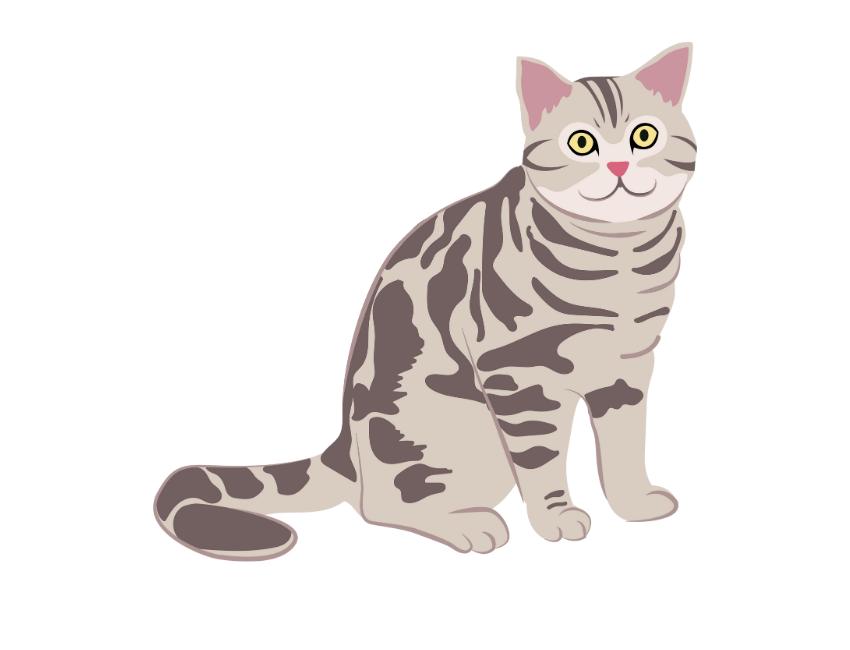
Frequently Asked Questions
How common is declawing ragdolls?
Declawing Ragdolls is relatively common, with some estimates suggesting that up to 20% of Ragdoll owners have their cats declawed. However, the ethical implications of declawing cats are highly debated, with many animal welfare experts recommending against the practice.
What are the potential consequences of declawing ragdolls?
Declawing cats, including Ragdolls, can have numerous potential consequences. These include increased aggressive and anti-social behaviors, increased risk of litter box avoidance, and pain and infection at the surgical site. It can also lead to permanent joint and muscle damage, lameness, and long-term disabilities. In severe cases, declawing can even be life-threatening.
Is declawing a painful procedure for ragdolls?
Yes, declawing a Ragdoll is a very painful procedure for the cat. It involves amputating the last bone of each toe and removing the claw. The procedure is not only painful in the moment, but also afterwards as the cat must adjust to walking and scratching without their claws. This can be especially difficult for Ragdolls, who are known for their affectionate and gentle nature.
Are there any laws or regulations forbidding the declawing of ragdolls?
Yes, there are laws and regulations that forbid the declawing of Ragdolls in some countries and states. In California, for example, it is illegal to declaw a Ragdoll or any other domestic cat. Additionally, other countries such as Brazil, Israel, and the United Kingdom also have laws in place prohibiting the declawing of cats.
What is the general sentiment surrounding declawing ragdolls?
Generally, declawing Ragdolls is seen as an unethical practice. Most people feel that it causes unnecessary stress and pain to the cats, and that there are other alternatives available that can be just as effective.

